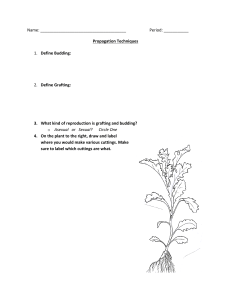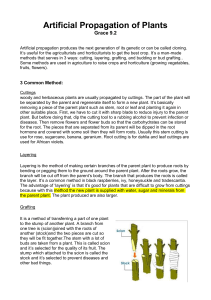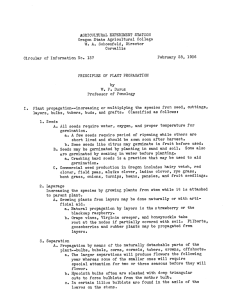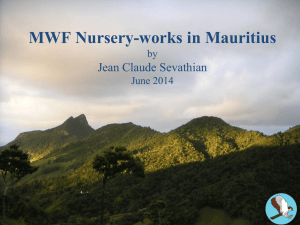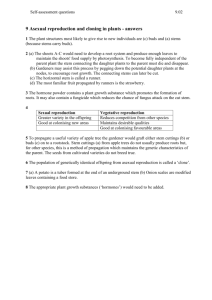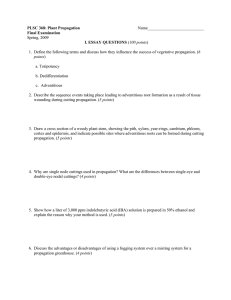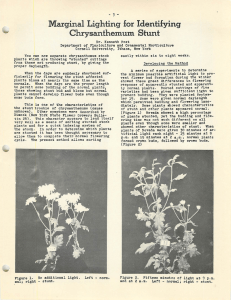Chapter 5 Exam Questions (Plant Propagation)
advertisement
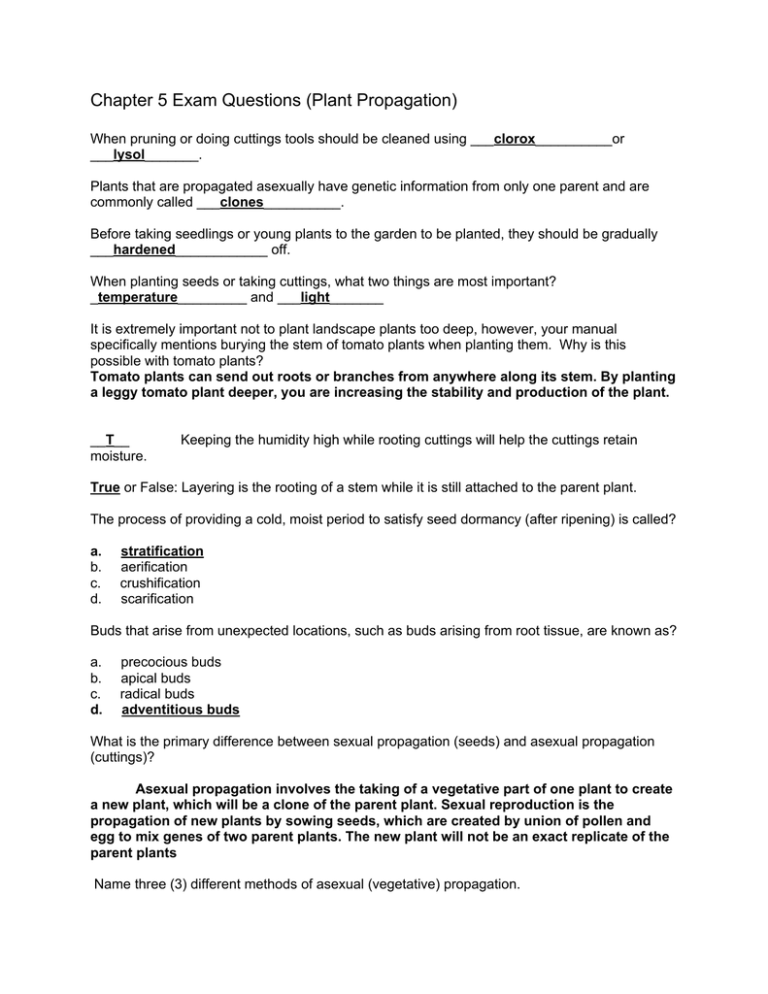
Chapter 5 Exam Questions (Plant Propagation) When pruning or doing cuttings tools should be cleaned using ___clorox__________or ___lysol_______. Plants that are propagated asexually have genetic information from only one parent and are commonly called ___clones__________. Before taking seedlings or young plants to the garden to be planted, they should be gradually ___hardened____________ off. When planting seeds or taking cuttings, what two things are most important? _temperature_________ and ___light_______ It is extremely important not to plant landscape plants too deep, however, your manual specifically mentions burying the stem of tomato plants when planting them. Why is this possible with tomato plants? Tomato plants can send out roots or branches from anywhere along its stem. By planting a leggy tomato plant deeper, you are increasing the stability and production of the plant. __T__ moisture. Keeping the humidity high while rooting cuttings will help the cuttings retain True or False: Layering is the rooting of a stem while it is still attached to the parent plant. The process of providing a cold, moist period to satisfy seed dormancy (after ripening) is called? a. b. c. d. stratification aerification crushification scarification Buds that arise from unexpected locations, such as buds arising from root tissue, are known as? a. b. c. d. precocious buds apical buds radical buds adventitious buds What is the primary difference between sexual propagation (seeds) and asexual propagation (cuttings)? Asexual propagation involves the taking of a vegetative part of one plant to create a new plant, which will be a clone of the parent plant. Sexual reproduction is the propagation of new plants by sowing seeds, which are created by union of pollen and egg to mix genes of two parent plants. The new plant will not be an exact replicate of the parent plants Name three (3) different methods of asexual (vegetative) propagation. Cuttings, layering, budding, grafting. Identify the following two terms as they relate to grafting. Scion – A piece of detached twig or shoot that contains two or three buds. A single bud is known as budding. Rootstock – also called stock or understock, the part of the graft that forms the root system of the grafted plant. Do most vegetable and annual seeds require a pretreatment to germinate? No, they generally do not require scarification, stratification, or any special pretreatment to break dormancy.

